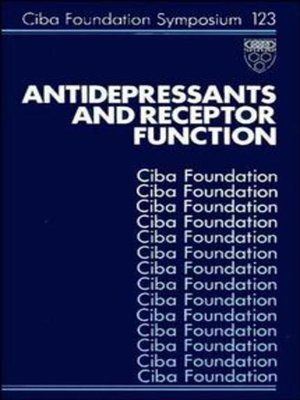
Sign up to save your library
With an OverDrive account, you can save your favorite libraries for at-a-glance information about availability. Find out more about OverDrive accounts.
Find this title in Libby, the library reading app by OverDrive.



Search for a digital library with this title
Title found at these libraries:
| Library Name | Distance |
|---|---|
| Loading... |
Chairman: Dennis Murphy, 1986
Depression is a common and often debilitating affective disorder. Attempts to develop effective antidepressants have a long history, but many questions remain about the mechanisms of action of such treatments and about the aetiology and pathophysiology of depression itself. Early observations centred attention on central monoamine systems, and animal studies suggested that changes in beta-adrenoceptor responsiveness were a common effect of antidepressant therapies. More recent research has encompassed many different central and peripheral receptors, time-dependent adaptational events at synapses, and the functional significance of changes in neurotransmitter systems in both humans and experimental animals. Such pharmacological studies aimed ultimately at elucidating the neurochemical basis of depression and of promoting new therapeutic approaches, provide the focus of this symposium volume. Many different methods of investigating the links between monoamine systems, depression and antidepressant treatments are described. Recent studies of receptors and of monoamine uptake sites in the brain and the periphery (e.g. in platelets and fibroblasts) are reviewed, with emphasis on alpha and beta adrenoceptors, [3H]imipramine-binding sites and serotonin receptors. The results of monitoring amine metabolites in cerebrospinal fluid and of measuring neuroendocrine, physiological and behavioural responses to pharmacological challenge are presented, providing information on monoaminergic function in depressed patients and experimental animals before, during and after treatment with antidepressant drugs or electroconvulsive shock. Genetic influences on receptor density are also discussed, as is the relevance to human depressive illness of animal models, including stress-induced behavioural depression in rats and responses to social stressors in rhesus monkeys.
This book should be of interest to neuropharmacologists, psychopharmacologists, clinical pharmacologists, behavioural scientists, psychiatrists and neuroscientists.







